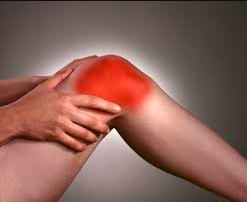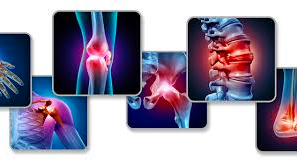Research paper on joint pain: Joint Pain: Causes, Symptoms, and Effective Management Strategies
Introduction
Research paper on joint pain:Joint pain is one of the most common health complaints worldwide, affecting people of all ages. From mild discomfort to severe immobility, joint pain can significantly impact quality of life and daily activities. According to the World Health Organization (WHO), musculoskeletal disorders, including arthritis and joint-related conditions, are among the leading causes of disability globally.
This research-based article explores the causes, symptoms, and treatments of joint pain, offering practical insights and evidence-backed solutions for managing and preventing it.
Understanding Joint Pain and Its Impact
Joints are the connections between bones that provide flexibility and mobility. When these joints are damaged by injury, inflammation, or disease, pain occurs. Joint pain may be acute (short-term) or chronic (long-lasting), and its severity can vary from mild stiffness to debilitating discomfort.
Common Causes of Joint Pain
Arthri Arthritis is one of the leading causes of joint pain. It is categorized into several types:
- Osteoarthritis (OA): Caused by wear and tear of cartilage.
- Rheumatoid Arthritis (RA): An autoimmune condition that inflames joint lining.
- Gout: Caused by uric acid crystal buildup in joints.
- Psoriatic Arthritis: Associated with psoriasis, causing joint inflammation.
Injuries
Sports injuries, accidents, or falls can lead to joint damage. Common injuries include:
- Ligament tears.
- Dislocations.
- Fractures.
- Sprains.
Infections Joint infections, also known as septic arthritis, occur when bacteria or viruses invade joint tissues. This condition requires immediate medical attention.
Autoimmune Diseases
Conditions like lupus or multiple sclerosis can attack the joints, leading to chronic pain and inflammation.
Other Causes Research paper on joint pain:
- Overuse from repetitive movements.
- Obesity adding pressure to weight-bearing joints.
- Age-related wear and tear.
- Metabolic disorders affecting bone health.
Recognizing the Symptoms of Joint Pain
Recognizing the symptoms of joint pain helps in early diagnosis and effective treatment. Common symptoms include:
- Stiffness, especially in the morning or after inactivity.
- Swelling and redness around the joint.
- Warmth and tenderness upon touch.
- Decreased range of motion.
- A grinding or popping sensation.
If pain persists for more than a few weeks, medical evaluation is necessary.
Diagnosis of Joint Pain
Doctors use a combination of medical history, physical exams, and diagnostic tests to identify the cause of joint pain.
Diagnostic Methods:
- Blood Tests: Detect inflammation markers and autoimmune disorders.
- X-rays: Reveal cartilage damage and bone spurs.
- MRI/CT Scans: Show soft tissue injuries.
- Joint Fluid Tests: Check for infection or uric acid crystals.
Treatment Options for Joint Pain
Medications
- Pain Relievers (Analgesics): Acetaminophen, NSAIDs (ibuprofen, naproxen).
- Anti-Inflammatory Drugs: Corticosteroids and DMARDs (for RA).
- Biologic Therapies: Target immune system pathways in autoimmune arthritis.
Physical Therapy
- Stretching and strengthening exercises.
- Low-impact aerobic activities like swimming and cycling.
- Techniques to improve flexibility and reduce stiffness.
Lifestyle Changes
- Weight Management: Reduces pressure on joints.
- Balanced Diet: Rich in omega-3 fatty acids, calcium, and vitamin D.
- Hydration: Maintains joint lubrication.
- Regular Exercise: Strengthens muscles and supports joint stability.
Home Remedies
- Applying hot or cold packs.
- Gentle massage for relaxation.
- Using supportive braces or cushions.
Surgical Interventions
When conservative methods fail, surgery may be necessary:
- Arthroscopy (joint cleaning or repair).
- Joint replacement (hip or knee replacement).
- Joint fusion in severe cases.
Preventing Joint Pain

While not all causes can be avoided, adopting preventive measures reduces the risk of chronic joint problems.
- Maintain a healthy weight.
- Stay physically active with low-impact exercises.
- Use correct posture and ergonomics.
- Avoid repetitive strain.
- Get regular medical checkups for early detection of joint issues.
Impact of Joint Pain on Daily Life Impact of Chronic Joint Pain
Chronic joint pain affects physical, emotional, and social well-being. Many individuals struggle with mobility, work limitations, and reduced quality of life. Studies show that untreated joint pain can lead to depression, sleep disturbances, and social isolation. Therefore, addressing joint pain is not only about physical health but also about improving mental and emotional well-being.
Advances in Joint Pain Research
Recent research in rheumatology and musculoskeletal health has introduced innovative solutions:
- Regenerative Medicine: Stem cell therapy and platelet-rich plasma (PRP) injections show promise in cartilage repair.
- Wearable Devices: Track movement and detect stress on joints.
- Artificial Intelligence in Healthcare: Assists in early diagnosis of arthritis through imaging analysis.
- Personalized Medicine: Tailored treatments based on genetic and biological factors.
These advancements hold potential for better management and improved patient outcomes.
Conclusion
Joint pain is a widespread condition that can significantly affect daily life and long-term health. While it can arise from various causes such as arthritis, injuries, or infections, early diagnosis and proper treatment are essential for effective management.
Adopting healthy lifestyle practices, engaging in regular exercise, and seeking timely medical care can greatly reduce the impact of joint pain. With ongoing research and advanced treatments, the future offers hope for better prevention and relief.
FAQs
1. What are the most common causes of joint pain?
Arthritis, injuries, infections, and autoimmune conditions are the most common causes.
2. Can diet help reduce joint pain?
Yes. Diets rich in omega-3 fatty acids, calcium, and antioxidants help reduce inflammation and support bone health.
3. When should I see a doctor for joint pain?
If pain lasts longer than two weeks, worsens over time, or is accompanied by swelling, fever, or immobility, seek medical advice.
4. Are natural remedies effective for joint pain?
Natural remedies like turmeric, omega-3 supplements, and heat therapy can provide relief but should complement medical treatment.
5. Is joint replacement surgery safe?
Yes, joint replacement surgeries like knee or hip replacements are safe and effective for severe cases, with high success rates





